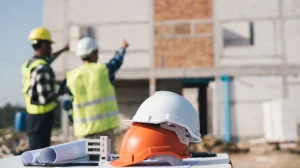A recent Supreme Court decision has highlighted the importance of ensuring clarity in any notices or directions that head contractors or principals provide to subcontractors. If you have any role within a construction contract, it is important that you understand your rights and obligations.
Facts
The decision of CPB Contractors Pty limited v Heyday5 Pty Limited [2020] NSWSC 1625 involved a dispute in relation to the construction of the new WestConnex M5 project in Sydney. Heyday5 Pty Ltd (Heyday), was engaged by a joint venture between CPB Contractors Pty Ltd, Dragados Australia Pty Ltd and Samsung C & T Corporation (CPB) to undertake electrical works related to the tunnel (Contract). The Contract was dated 9 July 2018.
As with many standard contracts, the Contract gave CPB the right to direct Heyday to increase, decrease or omit any part of the work under the Contract. The Contract also required Heyday to maintain safe work method statements (SWMS), and provide copies of the relevant SWMS to CPB before the commencement of works under the Contract, or periodically throughout the progression of the works to be performed by Heyday.
To complete the work that was the subject of the Contract, Heyday was required to use mobile elevated work platforms. As part of the operation of the platforms, a driver was required, as was a spotter on the ground to alert the driver of any dangers.
Accordingly, Heyday then provided a number of SWMS to CPB in accordance with the Contract for the use of these platform. As part of the first SWMS provided to CPB on 2 July 2018, it was an express term that the driver of the platform must maintain visual contact with the spotter. A further SWMS was provided to CPB on 12 December 2018, which was drafted differently to that of the first SWMS.
Following the publication of a work and safety report in South Australia in early 2019, CPB issued a direction to all subcontractors engaged in the construction of the M5 WestConnex (including Heyday) that stated that at all times when the platforms were being used, all spotters were required to be within the sight of the driver, and within a short enough distance to allow verbal communication between the driver and the spotter.
Heyday then claimed that this direction was in fact a variation under the Contract. CPB contended that this direction was not a variation as Heyday (and all subcontractors) were required, under both the Contract and the work health and safety legislation, to provide spotters to eliminate any risks that may arise from using these platforms. It would follow, under the position taken by CPB that any direction with the effect of confirming the obligations of subcontractors in terms of both the Contract and relevant legislation is not a variation to the contract.
Court Proceedings
The matter became the subject of an adjudication application by Heyday, in which the adjudicator determined that the direction resulted in a variation under the Contract. The variation, as the adjudicator determined, caused additional costs for Heyday, and as such they were entitled to the recovery of those costs.
CPB sought to set aside the adjudicator’s determination on two grounds, being that the determination of the claim for spotters by Heyday was unintelligible, and that Heyday’s claim for a spotters fee was determined on a basis on which neither party made submission in either of the adjudication applications.
The Court acknowledged that components of the adjudicator’s determination could have been expressed differently, but that it is not otherwise unintelligible as submitted by CPB. CPB failed on the first ground.
In respect of the second ground of appeal, the Court found that CPB was in fact required to demonstrate the requirement for Heyday (or any of the subcontractors) to have the visual contact by a spotter. The Court found that CPB had ample opportunity to do so.
Key Takeaway
Contractors need to be extremely cautious when issuing any form of correspondence to any subcontractors regarding compliance with their existing obligations (including those obligations that may be statutory or already a requirement under their specific contract) to avoid a subcontractor claiming a variation under a contract for construction. The decision also highlighted, once again, the importance of covering any possible issue that may arise within an adjudication application or response.
If you have any questions about any of the above, please do not hesitate to contact a lawyer in Coleman Greig’s Building & Construction team, who would be more than happy to assist you.














